Fire or life threatening emergencies: 000
Emergency Information: 13 3337
SES Emergency Assistance: 132 500
The Department of Fire and Emergency Services manage contracted aircraft and other aviation services to support emergency management and incident response across the State.
DFES also manages the RAC Rescue Helicopter network, the State’s only dedicated emergency rescue helicopter. The service provides vital, all-hazards search and rescue services with critical care aeromedical capabilities 24 hours a day, every day of the year.
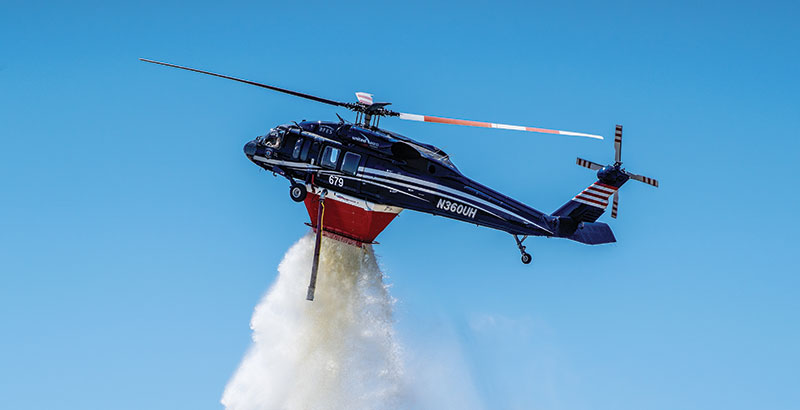

DFES operates a sophisticated aerial fleet to respond to fire and other emergency incidents, supporting firefighters and incident managers on the ground to protect lives, property, and the environment throughout Western Australia’s bushfire season.
DFES deploys Helitaks (aerial fire suppression helicopters) when public safety or assets are considered at imminent risk, when fire-fighting crews are in immediate danger, during extreme fire behaviour, or when high fuel loads are likely to accelerate the spread of a bushfire.
Since their introduction in 2002, Helitaks have proved to be a versatile, powerful, and efficient aerial resource for firefighters in their efforts to save lives and homes. DFES’ utility helicopter and Helitaks support operations and transport personnel, food, water and fuel to isolated communities during significant natural disasters, such as flooding.
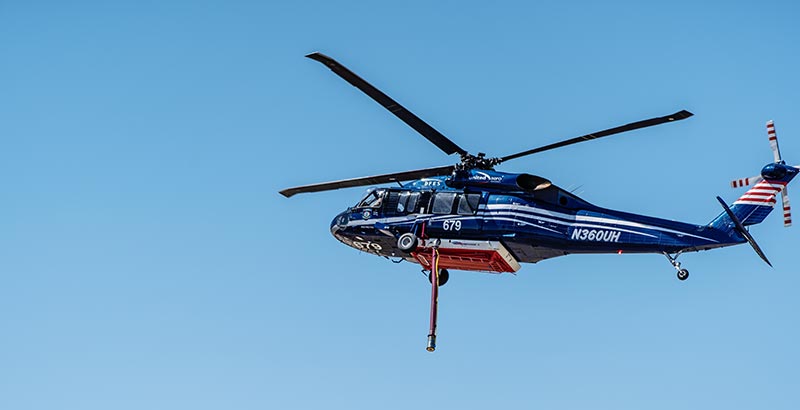
Under the Bush Fires Act 1954, the Fire Brigades Act 1942, and the Emergency Management Act 2005, Helitaks are legally permitted to collect water from private residential and commercial land.
The Helitaks commonly source water from lakes, dams, streams, reservoirs, and portable collar tanks.
Water sources are chosen based on proximity to the incident, access to the water source, visibility, level and suitability of water available with little or no potential risk to public spectators.
Helitak pilots need to have high visibility when supporting firefighting crews on the ground, which is why Helitaks can only operate during daylight hours.
A hovering Helitak’s rotor can produce wind gusts of up to 80km/ph and if community members are too close, they may be redirected to other water sources, costing precious response time. Keep at least 75m to the side of the Helitak’s flight path.
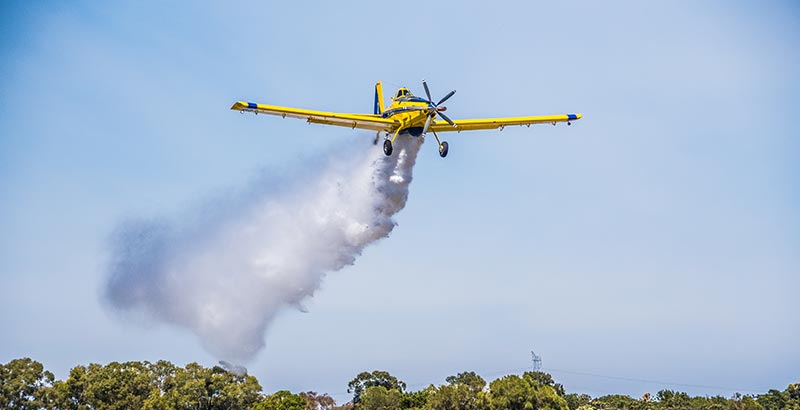
During a significant bushfire, DFES will call on additional fixed-wing bombers from The Department of Biodiversity, Conservation and Attractions (DBCA).
These aircraft assist DFES in containing large bushfires and support the ground crews and helicopter fleet. They are capable of carrying and dropping up to 3,200 litres of water.
Both DBCA and DFES aircraft are on standby through contract arrangements during the southern bushfire season and operate from nominated operational bases strategically located at Jandakot, Serpentine, Bunbury, Busselton, Manjimup and Albany. There are also 40 forward operational bases situated throughout WA, from Kalbarri in the north to Esperance in the southeast.
Like Helitaks, Fixed-wing Bombers can only operate during daylight hours. However, due to the location of their nominated operating bases in the region, they can be redirected quickly to high-priority fires at short notice.
Air Intelligence aircraft assists our Incident Management Teams with critical, strategic decision making by providing real-time incident information and intelligence, including an uninterrupted, live-streaming view of the incident. Highly trained firefighters provide situational awareness and assessments on the potential impacts to the community and critical infrastructure.
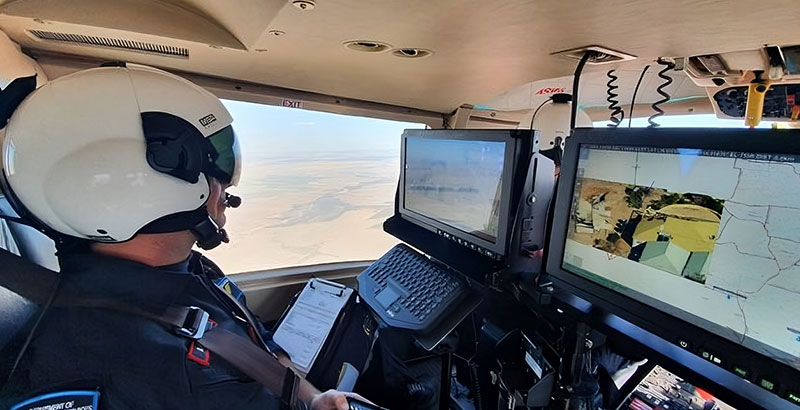
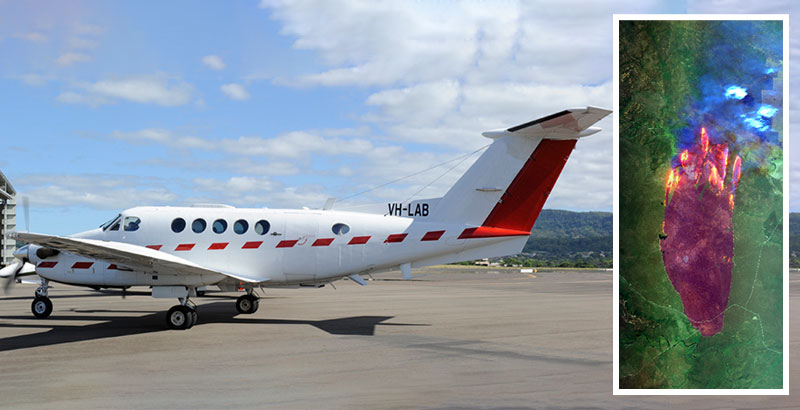
The Line Scanner can be used to establish and maintain strategic situational awareness, fire detection, disaster planning and management, and fire and flood mapping operations. The aircraft is fitted with a range of sensitive thermal and visual sensors, and a broadband satellite data communication system which enables rapid transfer of data from the aircraft to users on the ground.
Line Scanners create thermal mapping images (pictured left) which provides detail on fire front locations and maps the extent of the affected area. The Line Scanner works in conjunction with other firefighting aircraft to support ground firefighting crews.
The Large Air Tanker (LAT) can be utilised for both initial attack and retardant line building to support ground crews. The LAT is accompanied by a delegated fixed-wing air attack platform and Air Attack Supervisor. Its flexibility enables the LAT to work in both the urban interface and remote areas such as parks and forests.
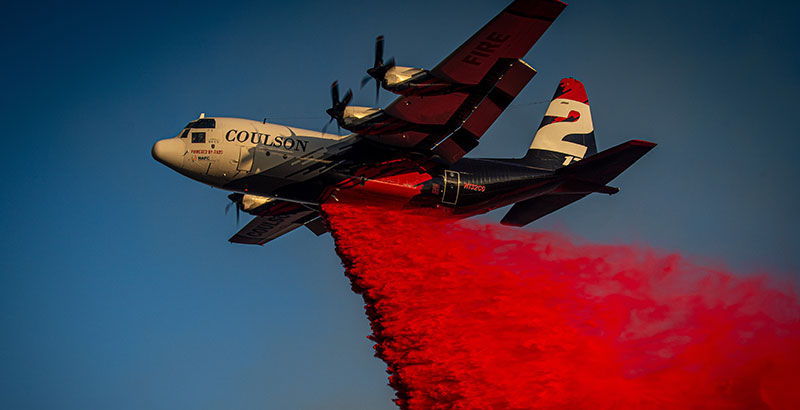
Western Australia’s Emergency Rescue Helicopter Service (ERHS) has been serving the community for over 20 years.
Funded by the State Government and managed by DFES, this free service operates with two primary helicopters and one backup helicopter based at Jandakot and Bunbury airports.
Since the service began, RAC has been the proud naming rights sponsor of the helicopters.
To learn more about the RAC Rescue helicopters, visit the RAC Rescue website.
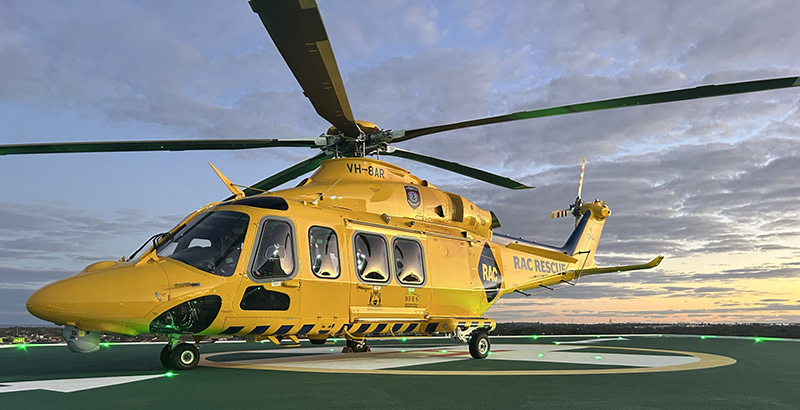
The mission of the service is to save lives and support all-hazards emergency operations 24/7 by rapidly deploying and inserting the rescue capabilities of the aircraft and personnel directly to an incident scene and if required, transport the rescued to the appropriate medical facility.
The RAC Rescue helicopters are available to support a wide range of emergency services personnel and volunteer training. Please complete our online Event Request Form.
Have you or someone you know been rescued by the RAC Rescue helicopters? DFES can facilitate reunions between patients and the crew involved in their rescue. Visit the Connect with us page on the RAC Rescue website to submit a request.
Have you captured the RAC Rescue helicopters in action? Visit the Share your moment page on the RAC Rescue website to submit your pictures or videos.
While we can’t arrange for the actual helicopters to attend a school or community event, the RAC Rescue Experience is available.